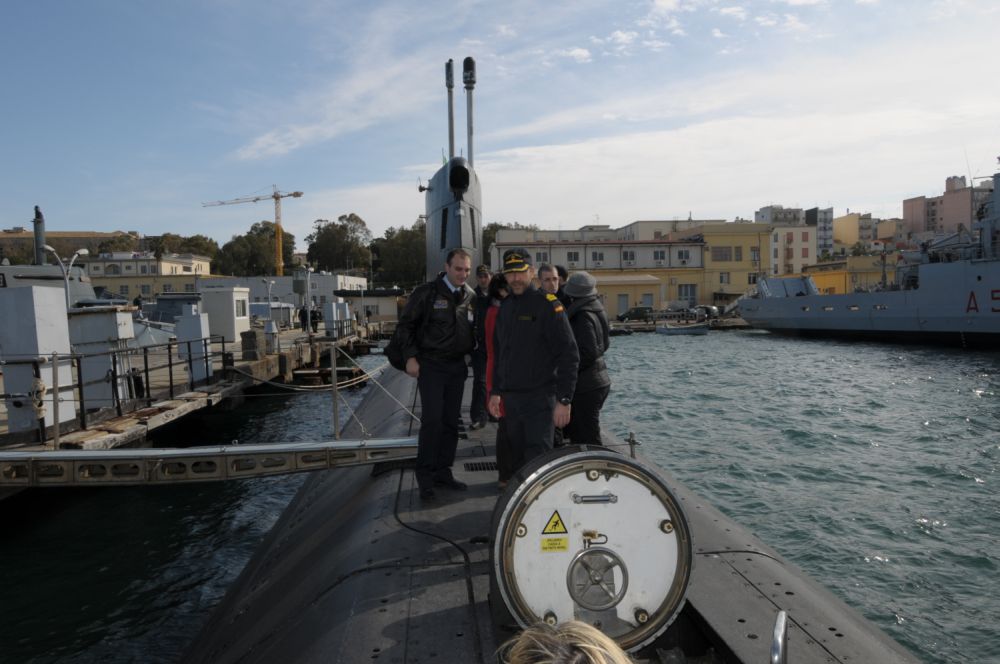WASHINGTON, Aug. 1, 2011 — Steaming toward Naval Station San Diego at the end of their five-month deployment, the crew of USS Cleveland was feeling good about the accomplishments of Pacific Partnership 2011.
The mix of about 600 military, interagency and nongovernmental organization medical professionals and engineers made a lasting impact on the region, Navy Capt. Jesse A. Wilson Jr., the mission commander, told American Forces Press Service during a call today from his vessel.
Over the course of the mission that included visits to Tonga, Vanuatu, Papua-New Guinea, Timor-Leste and the Federated States of Micronesia, they treated almost 39,000 patients and provided optometry services for nearly 12,000 and dental care for more than 3,000.
In addition, embarked veterinarians treated more than 800 animals and the ship’s line handlers and engineers conducted 22 engineering projects.
Now, midway between Hawaii and San Diego and due at homeport Aug. 4, Wilson reflected on the outpouring of appreciation at every stop along the way. In Tonga, for example, he recalled the education minister speaking through tears as he expressed thanks for the new roof the Seabees had built on a school decimated by a cyclone two years earlier.
“That’s the kind of thing we saw throughout this mission,” Wilson said. “The appreciation we encountered everywhere we went was amazing.”
U.S. Pacific Command, working through U.S. Pacific Fleet, launched the Pacific Partnership initiative in 2005 after a devastating tsunami struck the region. Since its inception, the annual mission has provided medical, dental, education and preventive medicine services to more than 250,000 people and completed more than 150 engineering projects in 15 countries.
As a result, Pacific Partnership provides a framework for the United States to work collaboratively with its international, interagency and nongovernmental partners to provide a fast, coordinated response should disaster strike the Pacific Ocean region, Wilson said.
“When you operate together like we are doing now in a time of calm and build relationships, and you get to know the faces and to understand the language and how people do business, it really gets to that goal,” he said. “During a time of crisis, there is no doubt in my mind that we would be better prepared to work together in the event that we need to respond quickly to a natural disaster.”
Wilson said he took huge personal satisfaction in ensuring all the moving parts came together in a highly complex mission that included joint, combined, interagency and nongovernmental organization operations.
Militarily, Pacific Partnership 2011 was heavy with Navy participants, but also included a Marine Corps contingent that operated vehicles and equipment and Army and Air Force representatives.
Also, this year the Coast Guard participated in the exercise for the first time, with two cutters — USCGC Jarvis and USCGC Sequoia — supporting different phases of the mission.
The interagency participation included State Department and U.S. Agency for International Development officials, and the ambassadors in four of the five countries worked directly with Wilson and his team.
In addition, more than a dozen nongovernmental organizations contributed manpower and expertise to the mission. Wilson emphasized the value of their work, and said he will recommend ways for the United States to better leverage their activities to sustain Pacific Partnership accomplishments.
“We approached this mission with the philosophy needed to have a whole-of-government approach to how we went about doing business,” he said. “When you operate like that, it is very powerful” because of synergies created when all entities contribute their specialized skills and capabilities.
This year’s Pacific Partnership also had a strong international dimension. Australia, the biggest contributing partner, contributed a contingency commander and two landing craft ships.
Japan, although unable to deploy a maritime vessel as planned because of its own earthquake and tsunami disaster, still sent its full complement of medical staff to support Pacific Partnership.
“They did a fantastic job,” Wilson said. “I can’t say enough about the Japanese people’s resilience, and their commitment to Pacific Partnership and to working with the countries of the region.”
For the first time, New Zealand took part in the mission, deploying the amphibious sealift ship HMNZS Canterbury. The engagement was part of a new strategic partnership between New Zealand and the United States forged last fall with the signing of the Wellington Declaration.
Wilson called it a “career high” to be able to work with his New Zealand counterparts and even fly his pennant over Canterbury during the Pacific Partnership mission.
In addition, a French helicopter crew embarked on Canterbury, and Canada, Singapore and Spain sent teams to support the mission.
Despite the complexity of the mission and the multiple interactions and engagements involved, Pacific Partnership came off “with near-perfect or flawless execution,” Wilson said.
But steaming to San Diego, he admitted to feeling a bit nostalgic during the final leg of what will be Cleveland’s final mission. The third-oldest Navy ship, which made its first deployment 44 years ago to the Gulf of Tonkin to support the Vietnam War, is due to be decommissioned next month.
With a bit of touch-up paint applied in Hawaii making it look brand new, Wilson said, it’s fitting that Cleveland will wrap up its career supporting a major humanitarian assistance and disaster response preparedness mission.
“This brings it all full circle,” he said. “It’s a great way for the ship to end its mission and its role in the U.S. Navy. And I can’t think of a better deployment to end it on.”
Source:
U.S. Department of Defense
Office of the Assistant Secretary of Defense (Public Affairs)

 von
von 